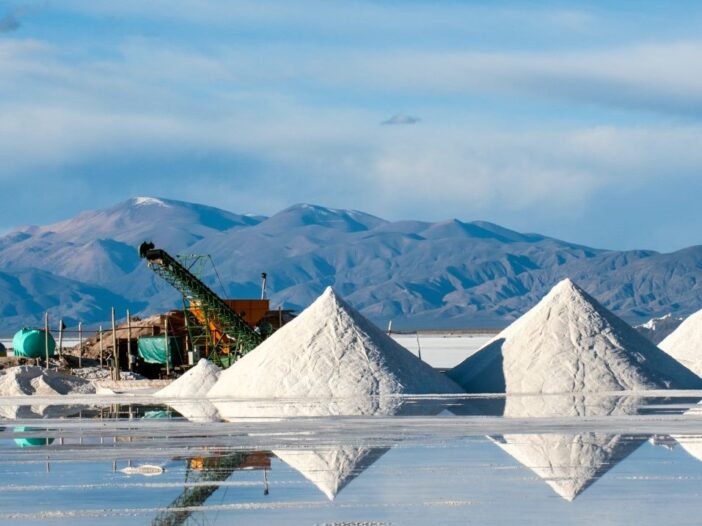In today’s Money Morning…the energy transition is the opportunity of a lifetime…renewables are growing much quicker than expected…inflation fears have been sending ripples through the markets…and more…
Well, there you have it. The Reserve Bank of Australia has raised interest rates for the first time since 2010.
And it looks like there could be more to come with Governor Philip Lowe saying that it’s not ‘unreasonable’ to expect the cash rate to increase to 2.5% over time.
While I still think that central banks will drag their feet on interest rate rises (rates are now at 0.35%, while the inflation rate is at 5.1%), it’s clear that the mood is changing.
Only a few months back, central banks were saying they wouldn’t raise rates till 2024 or that inflation was ‘transitory’.
The US Federal Reserve is also expected to raise rates half a percentage point this week, and the European Central Bank is already talking about raising rates back up to…ahem…zero.
Supply chain disruptions, government stimulus, and work shortages have all driven inflation higher.
And, of course, energy prices have also been a big factor. Energy prices could still rise more as the EU is looking to impose oil sanctions against Russia.
But as inflation rises, one of the best places to be, in my view, is commodities, and in particular, commodities needed for the energy transition.
The energy transition is the opportunity of a lifetime
Renewables are growing quick — much quicker than expected.
In 2021, clean energy’s share of global electricity reached 37.9%, with solar and wind making up just over 10% of the global share.
I mean, just 12 years ago, wind and solar made up a mere 1.7% of global electricity generation.
Costs are falling as technology improves. In fact, the International Energy Agency crowned solar as the ‘cheapest electricity in history’ in 2020.
But also, the more renewable energy we install, the cheaper it becomes.
Electric vehicles are also growing at a fast rate as batteries get cheaper and government policy gets behind EVs.
In 2020, while the overall car market slumped during the pandemic, EV sales increased to around three million from 2.2 million the previous year.
And in 2021, electric car sales more than doubled to 6.6 million.
Granted, EVs still make up a small number of overall car sales, but their global sales market share has increased from a mere 1.4% to close to 9% in the last five years.
It’s no longer a question of if the energy transition will happen, but instead, it’s about how fast it will happen.
And a lot of money will be flowing into this area.
BloombergNEF estimates that the global transition will need around US$173 trillion in investment over the next 30 years. Yep, you heard right, trillion with a T.
Solar panels, wind turbines, electric cars…all will need increasing amounts of raw materials for the transition.
The International Energy Agency expects that cobalt, graphite, and nickel demand will increase between 20 and 25 times by 2040, and lithium demand could increase even more, by more than 40-fold in the same time frame.
And speaking of lithium…
Inflation fears have been sending ripples through the markets
And the inflation-induced sell-off has included lithium stocks.
In particular, there’s been some concern about lithium demand from China as COVID numbers keep rising.
So it’s interesting that since the beginning of the year, lithium carbonate prices are up 126%, according to Benchmark Minerals, but lithium stocks have been falling.
For example, the Global X Lithium & Battery Tech ETF is down 21% year to date.
Major lithium miners like Albemarle Corporation and Livent Corp are also down close to 17% and 14% since the beginning of the year, respectively.
Liontown Resources’ [ASX:LTR] share price failed to spark any interest on Monday after the company announced a five-year deal with LG Energy Solutions for the supply of lithium spodumene.
And even Pilbara Minerals is down 25% since the beginning of the year even resthough they’ve said the average price they got for spodumene in the March quarter had increased to US$2,650 per dry metric tonne (dmt) from US$1,750–1,800 dmt in the December quarter.
Don’t get me wrong. These aren’t recommendations but mere observations.
Of course, picking the right stocks will be critical, but the fact that lithium is still key to the energy transition and is still heading for a crunch is no less real today than it was a few months ago.
Until next week,
 |
Selva Freigedo,
For Money Morning
Selva is also the Editor of New Energy Investor, a newsletter that looks for opportunities in the energy transition. For information on how to subscribe, click here.

